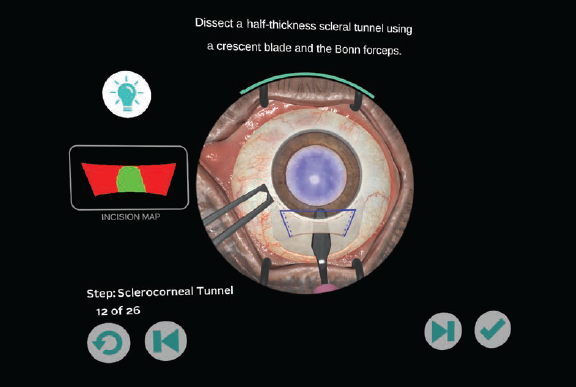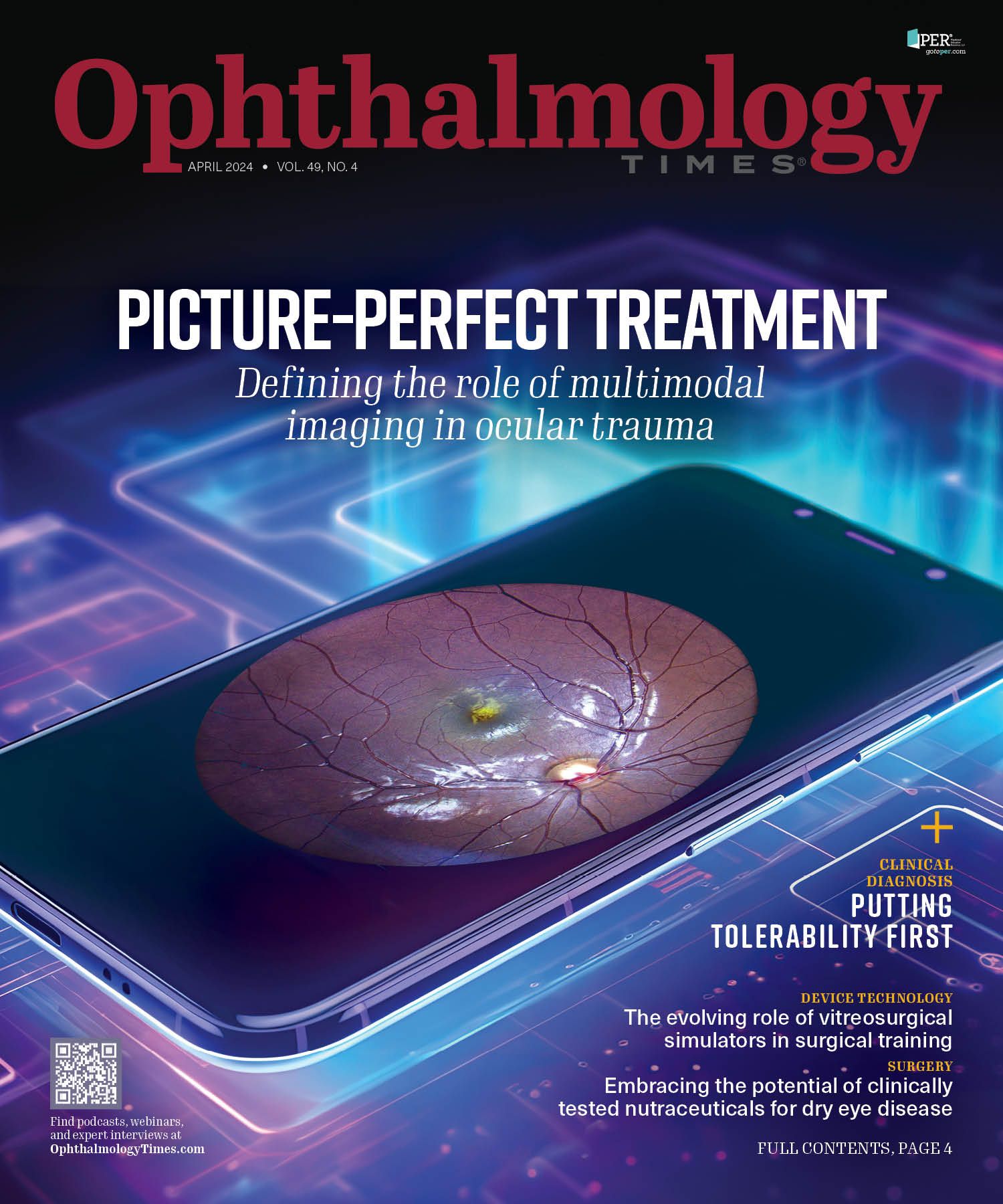- COVID-19
- Biosimilars
- Cataract Therapeutics
- DME
- Gene Therapy
- Workplace
- Ptosis
- Optic Relief
- Imaging
- Geographic Atrophy
- AMD
- Presbyopia
- Ocular Surface Disease
- Practice Management
- Pediatrics
- Surgery
- Therapeutics
- Optometry
- Retina
- Cataract
- Pharmacy
- IOL
- Dry Eye
- Understanding Antibiotic Resistance
- Refractive
- Cornea
- Glaucoma
- OCT
- Ocular Allergy
- Clinical Diagnosis
- Technology
Orbis, FundamentalVR team up to target training
Cataract simulation platform uses virtual reality to train ophthalmologists
(Image Credit: AdobeStock/Alfan Subekti)

In an effort to develop training technology for ophthalmologists, Orbis International and FundamentalVR have teamed up to develop a new immersive virtual reality (VR) training platform for manual small-incision cataract surgery that uses haptic feedback; cloud assessment data; and low-cost, off-the-shelf hardware.
The training tool is intentionally designed for use in low- and middle-income countries.
Hunter Cherwek, MD, vice president of clinical services and technologies at Orbis International, and Ashlie Leal, director of ophthalmology at FundamentalVR, discussed the technology with Ophthalmology Times.
Leal pointed out the FundamentalVR technology can harness the power of fully immersive virtual reality.
“That’s any virtual reality that’s conducted within a headset, and within that world, we’re able to create virtual environments, primarily for health care professionals,” she explained. “That’s what we specialize in. Those environments enable them to come together in the virtual world to learn to train to enhance skills and to collaborate.”
Orbis and FundamentalVR have collaborated on a solution utilizing FundamentalVR and its HapticVR platform, Fundamental Surgery, which is at the core of the technology. It is compact with easily sourced components, matched with haptic fidelity. It offered a solution to Orbis’ training needs.
Leal explained there are 2 different sides of the training spectrum.
“There’s the stand-alone side, which is the [one] that people are most familiar with, which is a stand-alone headset, which is untethered and utilizes controllers, or now you can just use your hands,” she said. “That’s a really powerful technology to be able to create within ophthalmology—for example, the ability to come into a virtual operating room and understand how to set up core bits of technology that you’re going to need in the procedure.”
Those items can include microscopes and other machines, and a physician can use their hands to perform procedures and learn step-by-step procedural elements as well.
“The other end of the spectrum, and the kind of cornerstone of what we do and what FundamentalVR is most known for, is HapticVR, ”Leal explained. “This combines the immersive virtual reality with haptic technology so [it] enables a sense of touch. So you’re able to be immersed in a virtual world.”
A physician using the training can get a sense of touch—the feeling of how a tool interacts with key bits of anatomy in the eye.
“You are able to accelerate your skills and understanding [of] micro-dexterity and how to work with the patient,” Leal said. “These elements combine to try [to] help accelerate confidence and competence in learners within the academic space. All of this technology utilizes off-the-shelf hardware, so the goal is to provide rich educational environments but in a very cost-effective way, using low-cost hardware that can scale to lots of different populations around the world.”
Cherwek pointed out that HapticVR can transform training and education in ophthalmology.
“I think it serves our mission very well and allows us to democratize education and simulation technology,” he explained. “We’ve already deployed units in Bangladesh, Mongolia, India, China, and Ethiopia. I’m super excited that at this year’s ASCRS [American Society of Cataract and Refractive Surgery] annual meeting, we’re launching the new version, which Ashlie and her team have helped us develop, and pushing that to the countries where we serve.”
Moreover, Cherwek noted that Orbis has been receiving plenty of positive feedback on the platform.
“An amazing new development within the ophthalmology world is virtual reality, [which] can be deployed for a range of different subspecialties,” he said. “Orbis is focusing on manual small-incision cataract surgery.”
A low-cost procedure that is conducted without electricity, the surgery offers a perfect opportunity for use of the training technology.
“I trained where you see one, do one, teach one,” Cherwek said. “Now, we see one, [simulate] one, and then discuss one. I think it really creates a very safe and comfortable environment for skills exchange and communication.”
One of the things Cherwek said he never expected that has really helped teams is having nurses do the simulation, which can help them gain a better understanding of how to anticipate and understand the procedure that they are helping the surgeons perform. “This VR training platform is an interactive learning tool,” he said. “It is a great complement to Orbis’ cataract training suite.”
Figure: A view of the training as seen in a microscope. (Image courtesy of Orbis International)

On the development side, Leal pointed out that the key benefits of the technology include the versatility of the platform.
“This can be applied to a range of subspecialties in ophthalmology,” she said. “Another advantage is the scalability and the low-cost nature of the hardware.”
Leal also noted that while simulation is used very widely within ophthalmology, companies like FundamentalVR really need to be able to scale that. And in low- and middle-income countries where Orbis works, there may be 1 ophthalmologist for every 1 million patients.
“The question is, How do we develop more surgeons and how do we help to increase and lower that kind of ratio?” she added “I think one of the big benefits of this technology is having that scalability and being able to do that in a cost-effective way.”
Moreover, Cherwek pointed out that for ophthalmologists and the patients they treat, this ultimately could lead to improved training programs and better communication in the operating room, which he said ultimately will translate into improved patient outcomes.
“What we found at Orbis International is that as quality drives demand, and when you have patients going back into the communities with quality outcomes and confidence in their surgery and their surgical teams, there are more patients coming for surgery,” he explained. “That creates a virtuous cycle of growth for the surgeon as well as the hospital. So for us, we see this technology as a change agent.”
Cherwek added that the partners are now distributing the technology to countries that previously did not have access to cataract surgery simulation training.
“The VR platform now connects to our telementoring and e-learning platform Cybersight,” he said. “This technology has been the missing piece for Orbis that we are so proud to now share with the world.”
The technology, Cherwek added, can mean that by powering up a laptop anywhere, you can transform any room into a simulation center, a telemedicine center, and a digital library.
“That’s really, really exciting,” he explained. “Something I’ve been waiting my whole career for.”
The technology also offers the opportunity to enhance training and even take it to the next level. Cherwek pointed out the training is putting education in the hands of the physicians who need it most.
“In a lot of the low-resource settings where we work, residents don’t always have access to wet labs and surgical supervision,” he said. “The thing that’s really amazing about the technology is the physicians can do it by themselves without supervision.”
With the simulator, novice physicians beginning to learn manual small-incision cataract surgery don’t need an instructor, proctor, or professor by their side. They can learn in their own time and at their own pace.
Cherwek has worked with the FundamentalVR team to perfect the technology leading up to its launch at ASCRS in Boston, Massachusetts.
“We will have booths available to allow people to actually kick the tires and try the [simulation] technology,” he said. “We have a product; people can see it and also see how they can grow and adjust and create even more opportunities with this training platform.”

